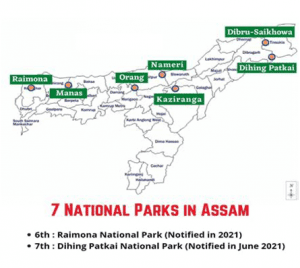Table of Contents
INDIAN POLITY
1. DEMONETISATION VERDICT
TAGS: GS-II- INDIAN POLITY
THE CONTEXT: Recently, The Constitution bench of the Supreme Court in the majority opinion (4:1) upheld the Union Government’s demonetization order of 8th November 2016 to demonetize currency notes of Rs 500 and Rs 1,000.
THE EXPLANATION:
The majority of judges (4:1) accepted all arguments of the Union Government
- Section 26(2) of the Reserve Bank of India Act, 1934 gives the Union government the power to demonetize currency “on the recommendation of the Central Board” of the RBI.
- The majority view found that the word ‘recommendation’ would mean a consultative process between the Central Board and the Central Government.”
- The judges highlighted that it cannot be expected that the RBI and the Central Government acted in two isolated boxes. An element of interaction/consultation in such important matters cannot be denied.
- The majority verdict states that curbing fake currency, black money and terror funding are legitimate interests of the state and have a rational nexus with demonetization.
- The court said that the Centre is the best judge since it has all the inputs about fake currency, black money, terror financing & drug trafficking.
- The majority stated that the court cannot determine the effectiveness of the economic policy. It agreed with the Centre’s contention that the decision had to be made in secrecy and haste for it to be effective.
Justice B V Nagarathna disagreed with the reasoning and conclusions in the majority opinion
- The Justice stated that demonetization was a violation of Section 26(2) of the RBI Act as the recommendation for the demonetization originated from the Centre and not the RBI’s Central Board.
2. AMENDMENT RELATED TO ONLINE GAMING
TAGS: GS-II- INDIAN POLITY & GOVERNANCE
THE CONTEXT: Recently, the Union Ministry of Electronics and Information Technology proposed an amendment to bring online gaming under the regulations of the Information Technology (Intermediary Guidelines and Digital Media Ethics Code) Rules, 2021.
THE EXPLANATION:
The proposed model is similar to the rules in place for digital news sites and streaming services under the IT Rules, 2021.
- The Ministry highlighted that the proposed framework will;
o Boost the legitimate domestic online gaming industry.
o Ensure greater transparency.
o Promote Consumer protection and investor confidence. - The All India Gaming Federation (AIGF) stated that it would reduce the State-wise regulatory fragmentation that was a big challenge for the industry.
Online Gaming Market in India
- A 2019 survey by the U.S.-based Limelight Networks found that India had the second-largest number of gamers after South Korea.
- The revenue of the Indian mobile gaming industry is expected to exceed $1.5 billion in 2022 and is estimated to reach $5 billion in 2025.
- The industry in the country grew at a CAGR of 38% between 2017-2020, as opposed to 8% in China and 10% in the US.
- It is expected to grow at a CAGR of 15% to reach Rs 153 billion in revenue by 2024. India’s percentage of new paying users (NPUs) in gaming has been the fastest growing in the world for two consecutive years, at 40% in 2020 and reaching 50% in 2021.
- According to a report by the Federation of Indian Chambers of Commerce & Industry (FICCI), transaction-based games’ revenues grew 26% in India, with the number of paying gamers increasing by 17% from 80 million in 2020 to 95 million in 2021.
ENVIRONMENT & ECOLOGY
3. ONE-HORNED RHINOS
TAGS: PRELIMS PERSPECTIVE- GS-III- ENVIRONMENT & ECOLOGY
THE CONTEXT: Assam Chief Minister has recently announced that no rhinos were poached in the state in 2022.
THE EXPLANATION:
Rhino Population
The park’s Rhino population has also increased. Under the Indian Rhino Vision 2020 (IRV 2020), the Assam government decided to reintroduce rhinos in Manas National Park in 2005, and the first rhino was translocated to the park in 2006, from the Centre for Wildlife Rehabilitation and Conservation (CWRC) near Kaziranga National Park.
ABOUT ONE-HORNED RHINOS:
- Only the Great One-Horned Rhino is found in India.
- Also known as the Indian Rhino, it is the largest of the rhino species.
- It is identified by a single black horn and grey-brown hide with skin folds.
- They primarily graze, with a diet consisting almost entirely of grasses as well as leaves, branches of shrubs and trees, fruit, and aquatic plants.
- Conservation status:
- CITES Appendix I
- Wildlife Protection Act, 1972: Schedule I.
Types of Rhinos:
The Greater One-Horned Rhino is one among the five different species of Rhino. The other four are:
- Black Rhino: Smaller of the two African species. (IUCN: Critically Endangered)
- White Rhino: Recently, researchers have created an embryo of the northern white Rhino by using In-vitro Fertilization (IVF) process. (ICUN: Near Threatened)
- Javan Rhino: Critically endangered in IUCN Red List.
- Sumatran Rhino: Recently gone extinct in Malaysia, but Critically Endangered in IUCN Red List.
About Manas National Park
- Manas National Park is situated on the bank of the river men at the foothills of the Himalayas. The beautiful park is earlier known as North Kamrup wildlife sanctuary is spread over an area of 519.77 sq km and was declared a sanctuary on December 01, 1928. It was established as the core of the Manas Tiger Reserve in April 1973 and elevated to the position of a National Park status on September 7, 1990.
- The wildlife species found in the national park are Hispid Hare, Pigmy Hog, Golden Langur, Indian Rhinoceros, Asiatic Buffalo etc. Other commonly seen animals are elephants, Leopard, Clouded Leopard, Himalayan bears, Wild boars, Samber, Swamp Deer, Hog Deer etc.

VALUE ADDITION:
INDIAN RHINO VISION 2020 (IRV 2020)
- Launched in 2005.
- The initiative is led by the Forest Department, Government of Assam, in partnership with WWF India, the International Rhino Foundation.
- The goal of IRV2020 was to increase the rhino population in Assam to 3,000by, by establishing populations in new areas.
- Rhinos are now found in four Protected Areas in Assam: Pobitora Wildlife Reserve, Rajiv Gandhi Orang National Park, Kaziranga National Park, and Manas National Park.
4. NEW TECHNOLOGY TO FILTER MICRO-PLASTICS FROM WATER
TAGS: PRELIMS PERSPECTIVE- GS-III- ENVIRONMENT & ECOLOGY
THE CONTEXT: Scientists from South Korea have developed a new water purification system that can quickly and efficiently filter out microplastics. Crucially, the polymer used is relatively inexpensive with excellent adsorption performance and good photothermal properties.
THE EXPLANATION:
- In an experiment, over 99.9 per cent of contaminants were taken out of the water in just 10 seconds.
- Microplastics have inundated the world, finding their way into the human food chain . While some traditional carbon-based filters can filter out microplastics, they have limitations — the adsorption rate is slow and they are not energy-efficient.
- The Korean team’s breakthrough system requires lower levels of energy, making it ideal for solar-based use. This is particularly useful for developing countries where power supply is inconsistent.
The Problem of Microplastics in Water
- Microplastics, tiny plastic particles that are less than 5mm in size, have become a global problem. They have been found in water bodies, soil, and air, and have even made their way into the human food chain.
- The presence of microplastics in water can have negative impacts on aquatic life and potentially on human health.
VALUE ADDITION:
Measures taken by government:
- India has pledged to ban all single-use plastics by 2022.
- All offices of central and state governments and major PSUs have been told to prohibit single-use plastic products.
- India has banned imports of solid plastic waste.
- India has passed the Plastic Waste Management Rules, 2016 and introduced the Extended Producer Responsibility.
Plastic Waste Management Rules, 2016
- It aims to increase minimum thickness of plastic carry bags from 40 to 50 microns.
- Expand the jurisdiction of applicability from the municipal area to rural areas, because plastic has reached rural areas also.
- Extended Producer Responsibility: To bring in the responsibilities of producers and generators, both in plastic waste management system and to introduce collect back system of plastic waste by the producers/brand owners, as per extended producers responsibility
- Introduced collection of plastic waste management fee through pre-registration of the producers, importers of plastic carry bags/multilayered packaging and vendors selling the same for establishing the waste management system
- Promote use of plastic waste for road construction as per Indian Road Congress guidelines or energy recovery, or waste to oil etc. for gainful utilization of waste and also address the waste disposal issue.
GOVERNMENT INTERVENTIONS
5. ‘SMART’ (SCOPE FOR MAINSTREAMING AYURVEDA RESEARCH IN TEACHING PROFESSIONALS) PROGRAM
TAGS: PRELIMS PERSPECTIVE-GS-II- GOVERNMENT INTERVENTIONS
THE CONTEXT: Recently, National Commission for Indian System of Medicine (NCISM) and Central Council for Research in Ayurvedic Sciences (CCRAS) under Ministry of Ayush launched ‘SMART’- scope for mainstreaming ayurveda research in teaching professionals programme.
THE EXPLANATION:
About ‘SMART’ (Scope for Mainstreaming Ayurveda Research in Teaching Professionals) Program:
- It is aimed to boost scientific research in priority healthcare research areas through Ayurveda colleges and hospitals.
- The proposed initiative is conceptualised with an objective to identify, support and promote innovative research ideas in healthcare research areas including Osteoarthritis, Iron Deficiency Anaemia, Chronic Bronchitis, Dyslipidemia, Rheumatoid Arthritis, Obesity, Diabetes Mellitus, Psoriasis, Generalised Anxiety Disorder, Non-alcoholic fatty liver disease (NAFLD).
- The eligible Ayurveda academic institutions may apply by 10 January, 2023.
- All details regarding contact information, eligibility criteria and application process has been shared to all recognized academic institutions and hospitals through NCISM.
- The ‘SMART’ program will motivate teachers for taking up projects in designated areas of healthcare research and create a large database.

